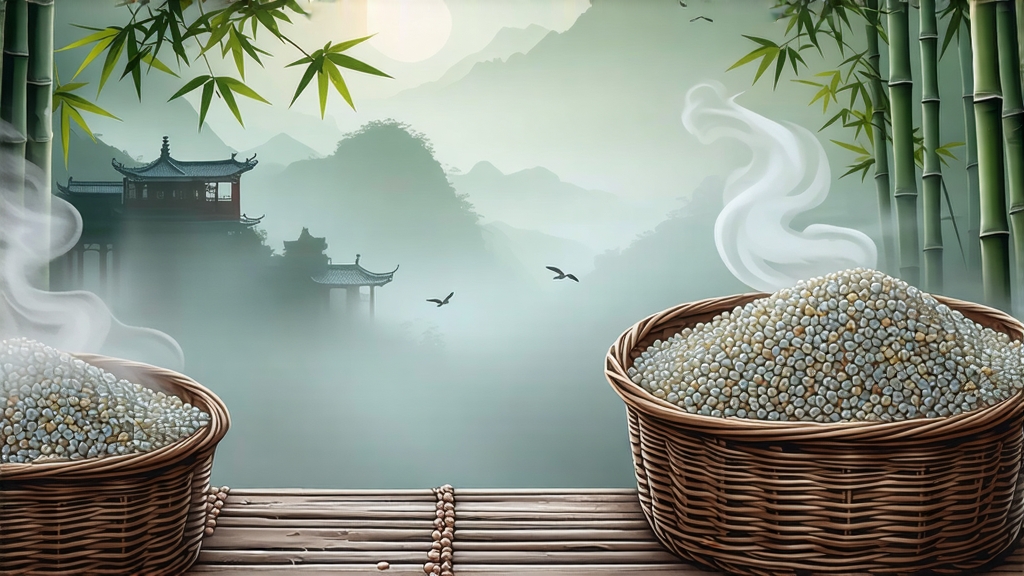
Among the six major families of Chinese tea, white tea is the most understated, yet within its quiet circle Bai Hao Yin Zhen—literally “White Hair Silver Needle”—shines like polished moonlight. Revered since the mid-Qing dynasty, this bud-only tea is harvested for barely ten spring days in Fujian’s coastal counties of Fuding and Zhenghe, where marine air meets mineral-rich red soils. Locals claim the cultivars Dai Bai and Xiao Bai evolved here over eight centuries, their down-covered shoots adapting to salt-laden morning mists that force the plant to secrete a protective fuzz later celebrated as “silver.”
Imperial records from 1796 first mention tribute cakes made entirely of these unopened needles; by 1857 court chroniclers noted loose-needle infusion, praising its “cooling palace chambers without fire.” The name itself is poetic economy: bai for the pale liquor, hao for the visible down, yin for the needle shape, zhen for the precious authenticity that only intact buds can deliver.
Plucking begins when the air temperature hovers between 15 °C and 20 °C and the bud length reaches 2.5–3 cm, still sheathed in two tiny fish-scale leaves that must be discarded on the spot. Experienced pickers work backward across the bush so their shadows do not shade the shoots, a detail that prevents premature enzymatic oxidation. Daily harvest ends at noon; by 2 p.m. the buds are already spread on bamboo trays set under shaded outdoor corridors where 60 % natural humidity and gentle wind perform the first, crucial withering.
Unlike green tea’s kill-green phase, white tea production is a meditation on restraint. The goal is to dehydrate while preserving endogenous enzymes that will slowly mellow over months or years. After outdoor withering, trays are moved indoors for 24–36 h where ambient temperature is kept below 28 °C; masters shuffle the buds every hour so each needle experiences identical airflow. A final 30-minute “sunbathing” at dawn locks in fragrance before the tea is baked at 40 °C for twenty minutes—just enough to drop moisture to 5 %. The entire cycle spans three days but involves no twisting, rolling, or pan-firing, explaining why Silver Needle’s cell structure remains almost intact, its white down shimmering like frost on a winter reed.
Geography stamps character. Fuding’s granitic soils lend a marine minerality reminiscent of sea-spray on limestone, while Zhenghe’s higher iron content yields a deeper, orchard-fruit sweetness. Within Fuding, the village of Taimu Mountain enjoys 220 foggy days annually; buds grown here carry a lactonic creaminess that connoisseurs liken to fresh mascarpone. Meanwhile, Zhenghe’s greater diurnal range amplifies jasmine-linalool compounds, giving a night-blooming bouquet that lingers in the cup long after the liquor is gone.
Ageability is Silver Needle’s quiet superpower. Stored below 25 °C and 50 % humidity, the tea oxidizes microscopically, trading youthful bamboo and melon notes for aged honey, medicinal herb, and dried longan. A 2012 cake recently cupped in London revealed a cognac-colored infusion tasting of star anise, sandalwood, and the faintest whisper of camphor—evidence that white tea, when left undisturbed, can rival pu-erh in complexity.
To brew Silver Needle respectfully, begin with neutral water around 85 °C; boiling water scalds the down and coaxes harsh tannins. Use 3 g for 120 ml in tall glass or porcelain gaiwan; the height allows buds to stand upright, a visual ballet nicknamed “forest of needles.” First infusion 45 s, subsequent steeps add 10 s. A proper session yields five pours: the opening note is crisp cucumber skin, the second brings steamed rice milk, the third transitions to ripe pear, fourth to sweet alfalfa, and the fifth to a clean mineral finish that leaves the palate cool, as though breathing mountain air after rain.
Professional cupping follows a 1:50 ratio, 5 g in 250 ml at 90 °C for five minutes. Look for a liquor the color of pale chardonnay with a surface ring of micro-bubbles—sign of amino-acid richness. Aroma markers divide into three tiers: top is fresh fennel and lily; mid is warm brioche; base is wet slate. Texture should be glyceric, coating the tongue like light olive oil, with zero